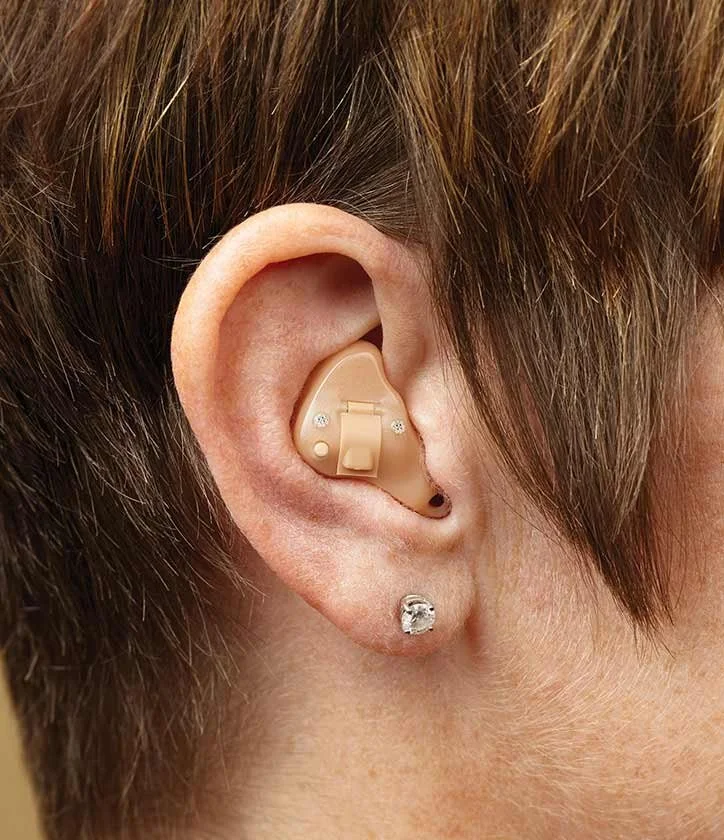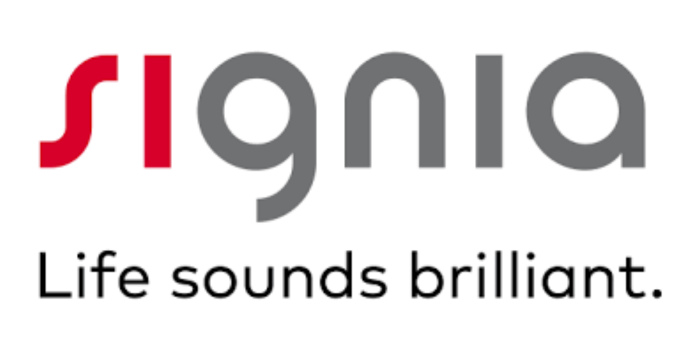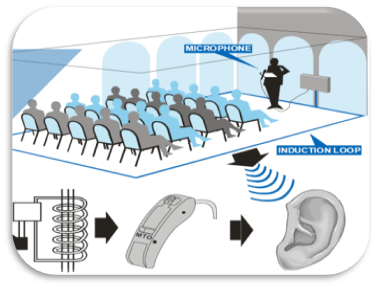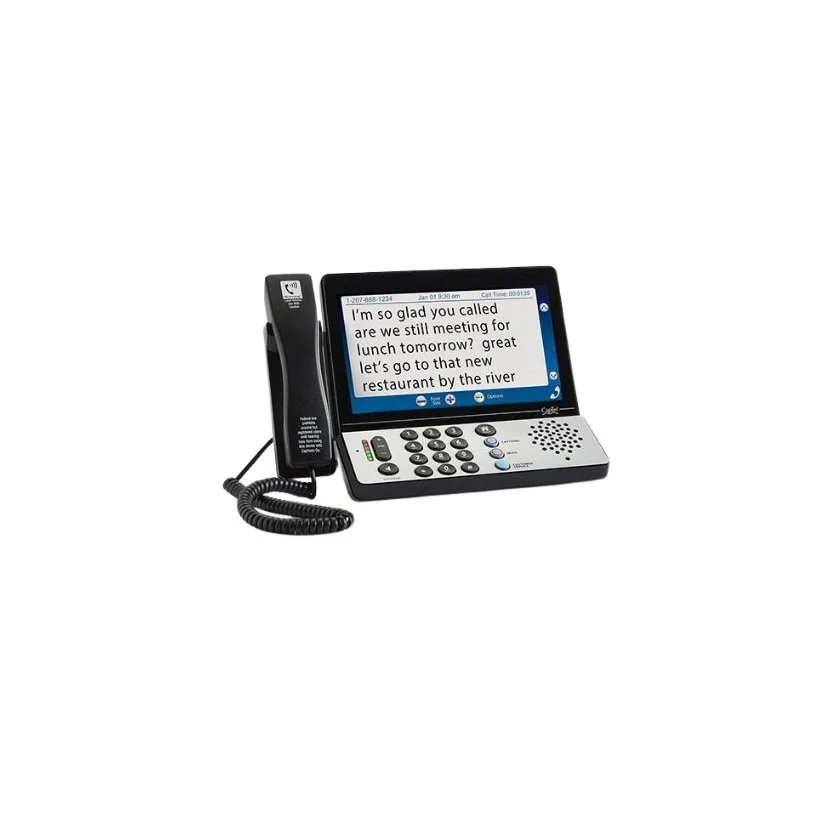RESOURCE FOR HEARING LOSS
Technology & Hearing Devices
Hearing Aids.
What are Hearing Aids?
A small electronic device that you wear in or behind your ear that is programmed to help those with hearing loss. The style of hearing aid is determined by the degree and type of hearing loss one has.
Selecting the Right Hearing Aid.
There are many different types of hearing aids out there which can be overwhelming. Selecting the one that is right for you will depend on several factors such as severity of hearing loss, size/shape of your ear, etc. Things to consider may include:
Types of Hearing Aids.
Over-the-Counter vs. Prescription Hearing Aids
OTC hearing aids are designed for mild to moderate hearing loss, while Prescription Hearing Aids can help with all types of hearing loss. It’s crucial to understand that, unlike acquiring a new pair of glasses, adjusting to hearing aids will require some time and fine-tuning before achieving full satisfaction.
Hearing Aid Manufactures: Top Six Industry Leaders.
Cochlear Implants.
What is a Cochlear Implant?
A cochlear implant is a complex device that aids profoundly deaf or severely hard of hearing individuals. It comprises an external part behind the ear and an internal part surgically placed under the skin. Components include a microphone, speech processor, transmitter, receiver/stimulator, and electrode array. While not restoring normal hearing, it provides a useful representation of sounds, aiding in speech understanding.
How does it work?
Different than a hearing aid, a cochlear implant bypasses and circumvents damaged parts of the ear by directly stimulating the auditory nerve. Signals produced by the implant travel via the auditory nerve to the brain, which interprets them as sound. Cochlear implant hearing differs from natural hearing and requires adaptation. It enables individuals to discern warning signals, perceive environmental sounds, and comprehend speech both in-person and over the telephone.
Understanding Cochlear Implants
Initially approved for adults in the 1980s, cochlear implants are now also used in eligible children from 12 months of age.
Candidates are typically those no longer benefitting from hearing aids. An audiologist evaluates eligibility through testing. If suitable, surgery, performed by an ENT doctor, inserts an electrode array into the cochlea, often leading to permanent hearing loss.
Activation occurs about four weeks post-surgery, but adaptation takes time. Initial sounds may be distorted, resembling beeps or robotic tones. With consistent use and active listening practices, clarity improves over time, though full comprehension may take months, particularly for phone conversations and music. It's crucial to note that while cochlear implants provide significant benefits, they do not fully restore normal hearing.
There are 3 Cochlear Implant Manufacturers to choose from:
Assistive Listening Devices.
Assistive listening devices (ALDs) are specialized tools designed to enhance the auditory experience. These devices amplify sound and reduce background noise, making it easier to hear in various settings. ALDs include a range of products, such as hearing loops, FM systems, infrared systems, and personal amplifiers, each catering to different listening needs and environments. By improving sound clarity and volume, assistive listening devices play a crucial role in improving communication and quality of life for those with hearing difficulties.
Audio Induction or Hearing Loops.
Hearing loop systems use a microphone, an amplifier, and surrounding wiring to transmit sound while canceling background noise. This allows listeners to hear the speaker clearly, especially in areas with challenging acoustics like hard floors, high ceilings, and open spaces. Hearing aid/Cochlear users activate the T (telecoil) switch to access the signal within the looped area. Those without hearing aids can use a portable device with headphones to benefit from the system.
FM System.
Wirelessly transmitting sound from a mic to an aid through radio waves. This system involves a compact transmitter and microphone worn by the speaker, while the listener utilizes a portable receiver. These devices are commonly used in group meetings, church services, conferences, and classrooms and are versatile for both indoor and outdoor settings, providing direct audio input to hearing aids or cochlear implants. There are also Infrared Systems that do the same thing but with light. It’s important to note that sound can go through walls, but light cannot. FM Systems usually have a farther range.
Bluetooth Systems.
Bluetooth hearing devices revolutionize the way individuals with hearing loss connect with the world around them. By seamlessly integrating with smartphones, TVs, and other Bluetooth-enabled devices, these advanced hearing devices provide clear, direct streaming of audio, enhancing communication and entertainment experiences.
Phonak Roger-On
A unique microphone for everyday use in noise and over distance. It recognizes if speech is coming from the left or right and provides spatial information to combine visual and audio cues. It also helps support conversations by automatically selecting the person who is talking.
Resound/Cochlear Mini Mic
Crystal clear sound from up to 80 ft. away. Following a conversation between people at the dinner tale, n business meeting or at presentation in an auditorium can be tough if you have hearing loss. All those voices seem to blend together. This Multi Mic enhances your hearing and extends your listening range.
Hearing Apps
Hearing apps turn smartphones and tablets into assistive devices, amplifying sound and reducing background noise. See useful app section for more details.
ReSound TV Streamer
Stream sound from your TV, computer, or music system directly to your hearing aids or CI. Turns your device into wireless headphones with a 22-foot range. With its ease of use and versatility, the ReSound TV Streamer 2 can quickly improve your in-home listening experience.
Personal Sound Amplification Products (PSAP).
Small, portable devices that help individuals with hearing difficulties by amplifying sounds. Featuring a sensitive microphone, these devices enhance audio for clearer hearing. Ideal for conversations or TV listening, it offers versatility for use indoors or outdoors. PSAPs are not hearing aids, and should not be used to replace one. Amplifiers simply make things louder, regardless of frequency or volume, while hearing aids are fitted and fine-tuned to help mitigate hearing loss by boosting certain frequencies.
Pocketalker Ultra by Williams Sound
A popular choice for personal amplification, featuring a lightweight design and adjustable tone and volume controls
Bellman & Symfon Maxi Pro
Known for its clear sound quality, this amplifier can connect to smartphones and other devices via Bluetooth.
Sonic Alert Listening Devices
A versatile amplifier with a built-in microphone and multiple sound amplification levels, suitable for various listening environments.
BeHear
A stylish and multifunctional amplifier that includes Bluetooth for music streaming and phone calls, as well as ambient sound amplification.
More Assistive Devices.
Assistive listening devices (services) are essential tools for individuals with hearing loss, enhancing communication and improving daily life. These devices range from captioning phones to bed shaker alarm clocks and light notification systems, ensuring that users can stay connected and aware of their surroundings with greater ease and confidence.
Useful Apps.
In the digital age, technology continues to revolutionize the way we navigate the world, offering innovative solutions to overcome challenges and enhance accessibility for all. For those with hearing loss, smartphones and tablets have become invaluable tools, providing access to a diverse range of apps designed to address specific needs and improve quality of life. From communication aids to captioning services, sound amplification, and auditory training programs, these apps offer invaluable support in navigating daily activities and fostering greater independence. Here are a few useful apps tailored for individuals with hearing loss, empowering you to engage more fully in conversations, enjoy multimedia content, and navigate the world with confidence.
It’s important to keep in mind that most hearing aid/implant companies have their own app you can install that can be extremely useful. Ask your audiologist for help if you’re unsure how to set that up.
** If you know of a useful app that you would like us to share with others, please contact us at info@Hear4Hope.org.



































